#Artemisia Lomi
Explore tagged Tumblr posts
Text
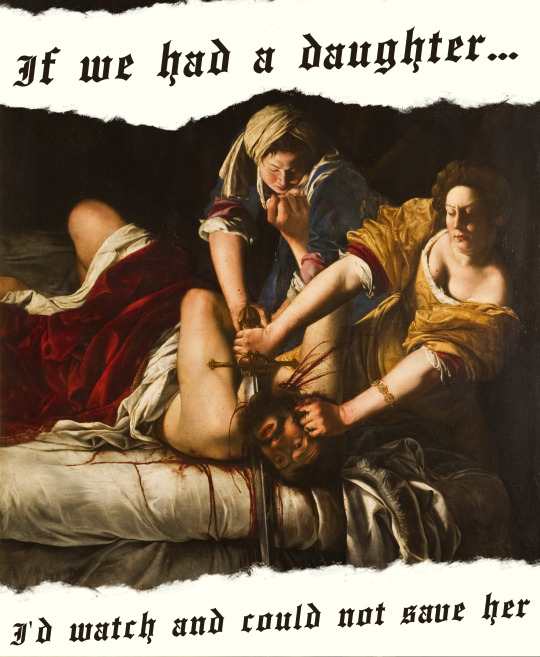
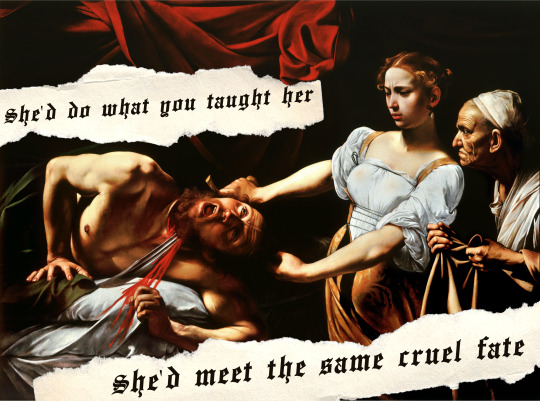
Lyrics: Paris Paloma. “Labour” (2023) || Artemisia Gentileschi. Judith Slaying Holofernes (1614–1620) || Caravaggio. Judith Beheading Holofernes (1599–1602)
#judith slaying holofernes#labour paris paloma#judith beheading holofernes#book of judith#paris paloma#artemisia gentileschi#artemisia lomi#caravaggio#baroque painting#italian art#baroque#female rage#feminist art#judith#labour#on girlhood#on womanhood#fathers and daughters#mothers and daughters#apocrypha#mine <3
187 notes
·
View notes
Text



Back to back Artemisia Gentileschi/Lomi mini zines. ✨Ft the Death tarot.
#my art#art#artist on tumblr#artemisia gentileschi#artemisia lomi#baroque#counter reformation#caravaggio#Michelangelo#fine art#mixed media#i was creative today#renaissance Art#mini zine#art zine#my zine
4 notes
·
View notes
Text
painter: Artemisia Lomi or Artemisia Gentileschi (8 July 1593 – c. 1656) was an Italian Baroque painter.
In 1611, Orazio was working with Agostino Tassi to decorate the vaults of Casino delle Muse inside the Palazzo Pallavicini-Rospigliosi in Rome. One day in May, Tassi visited the Gentileschi household and, when alone with Artemisia, r#ped her. Another man, Cosimo Quorli, played a part in the r#pe. A female friend of Gentileschi, Tuzia, was present during the r#pe, but refused to help her. via Wikipedia


"angry women burn brighter than the sun"
2K notes
·
View notes
Text







Artemisia Lomi or Artemisia Gentileschi (US: /ˌdʒɛntiˈlɛski/,[1][2] Italian: [arteˈmiːzja dʒentiˈleski]; 8 July 1593 – c. 1656) was an Italian Baroque painter. Gentileschi is considered among the most accomplished seventeenth-century artists, initially working in the style of Caravaggio. She was producing professional work by the age of 15.[3] In an era when women had few opportunities to pursue artistic training or work as professional artists, Gentileschi was the first woman to become a member of the Accademia di Arte del Disegno in Florence and she had an international clientele.
Many of Gentileschi's paintings feature women from myths, allegories, and the Bible, including victims, suicides, and warriors. Some of her best known subjects are Susanna and the Elders (particularly the 1610 version in Pommersfelden), Judith Slaying Holofernes (her 1614–1620 version is in the Uffizi gallery), and Judith and Her Maidservant (her version of 1625 is in the Detroit Institute of Arts).
Gentileschi was known for being able to depict the female figure with great naturalism and for her skill in handling colour to express dimension and drama.
#happy birthday to my historical crush#artemisia gentileschi#art#baroque#italian art#italian painter#female artists#classical art#fine art#cw: blood#WOMEN 😍
23 notes
·
View notes
Text
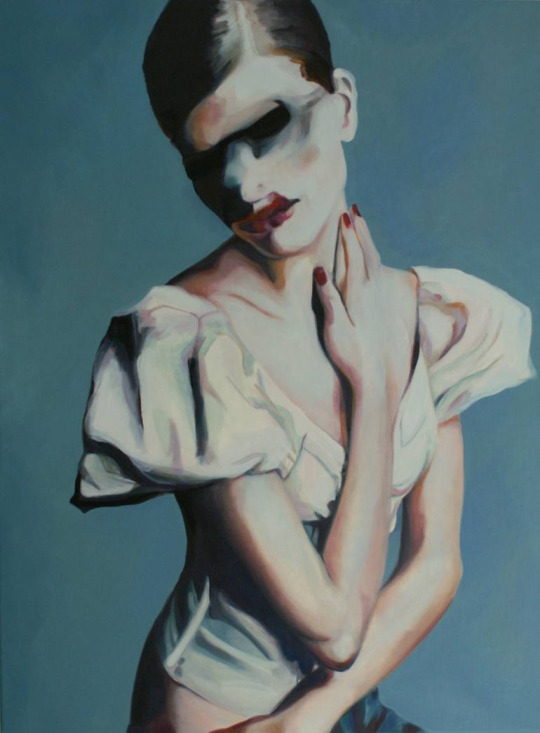

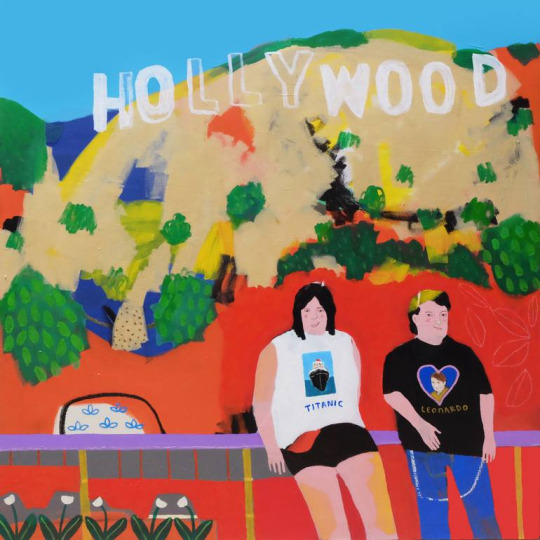
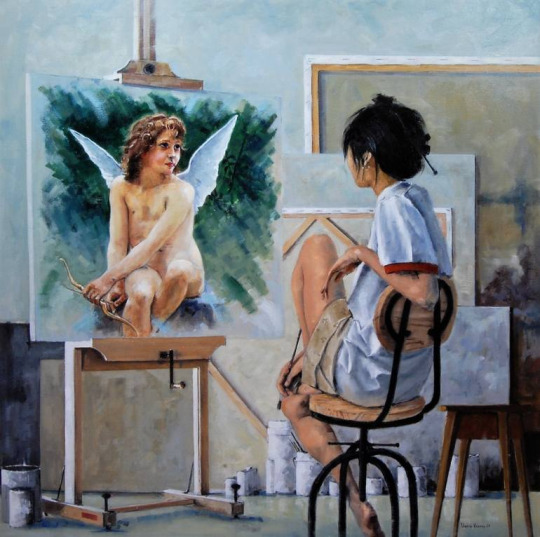


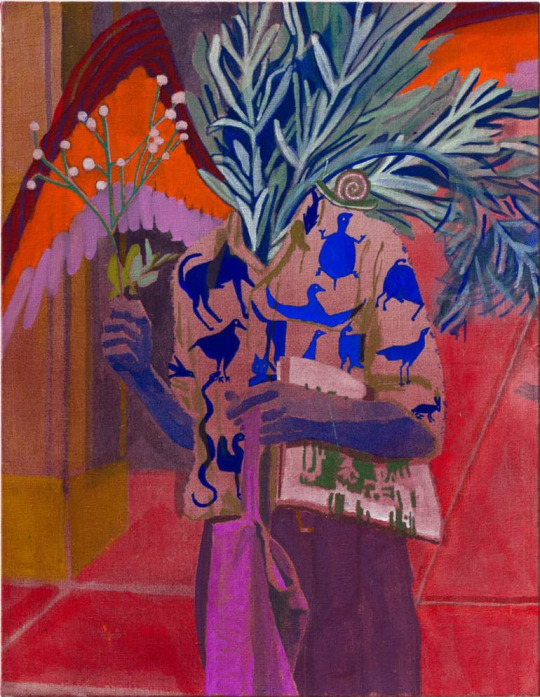
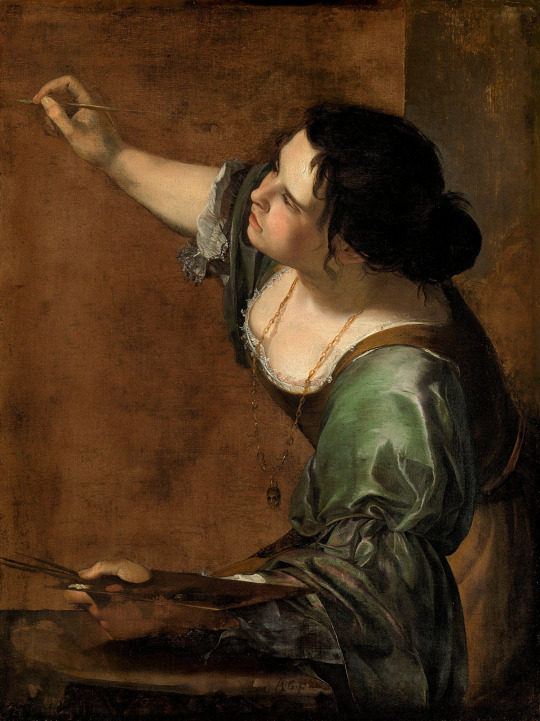



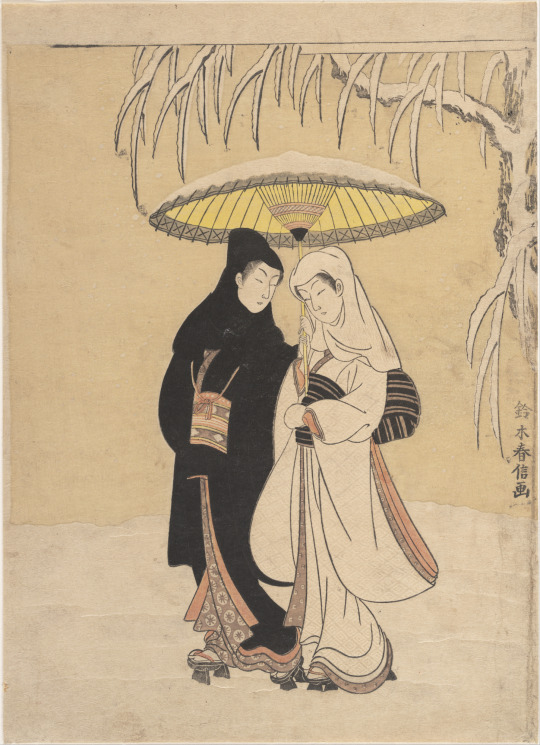

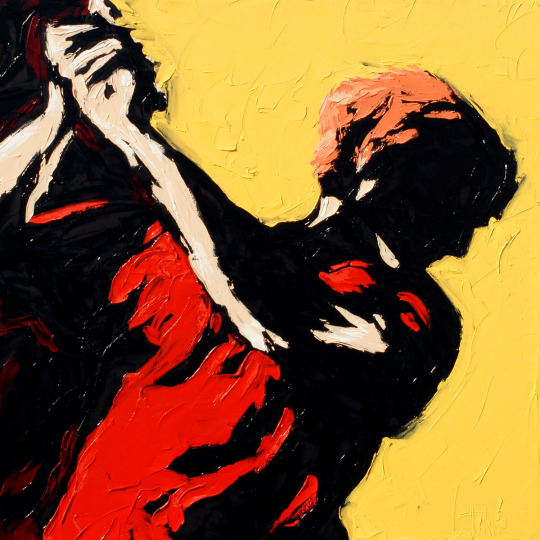
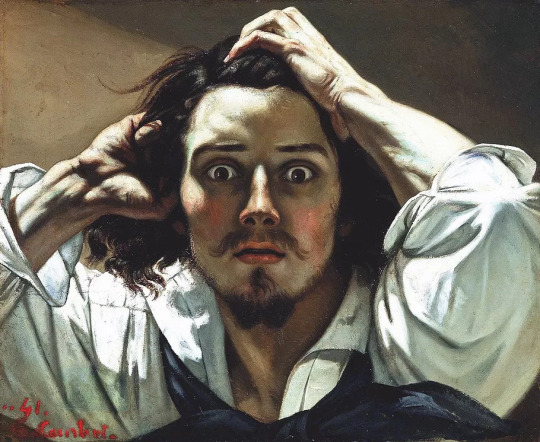



when im bored i look around for paintings so heres some recent paintings of people that i like .
Blue angel - Nathalie Pirotte | Narcissus, Series 32 #33 - Heather Goodwind | In Search of DiCaprio - Alan Fears | Pintora 2023 - David Farrés Calvo | Santa Monica Boulevard - Arun Prem | Study for an Angel to Come, 2017 - Fanny Nushka | BEING A TREE II - Julie Polidoro | Self-Portrait as the Allegory of Painting - Artemisia Lomi | Vanity - Auguste Toulmouche | Slow Dance - Kerry James Marshall | Portrait of Adele Bloch Bauer 2 - Gustav Klimt | Lovers in the Snow - Suzuki Harunobu | Nubian Beauty - Tobias Andreae | Backswing - Bill Stone | The Desperate Man - Gustave Courbet | Snow Angels - Claudia Barbu | ICY WINGS - Claudia Barbu | 2021 - Angela Ruth D'Agostino
5 notes
·
View notes
Photo



Three paintings from a 2022 exhibit focused on women in art: Myths, Heroines and Rebels from Caravaggio, Artemisia Gentileschi and Tamara de Lempicka in Noto, Sicily
Jael and Sisera, 1642, by Alessandro Turchi, called l’Orbetto
Judith with the Head of Holofernes, 1625, by Jaques Stella
Judith with the Head of Holofernes, 1601, by Orazio Lomi Gentileschi
Photos by Charles Reeza
#fine arts#17th century art#heroic women#decapitation#seduce and kill#Bible stories#kill their leader to save your people#Italy
8 notes
·
View notes
Note
My turn?
Your 3 favourite historical figures! 📜
(just 3, yes, this is a good-hearted revenge :P)
Hello! 💙✨ This is very much fair, and I humbly accept the challenge :P
In order to actually being able to chose I decided to pick them just from Italian modern and contemporary history. So, in cronological order...
1.Domenico Scandella aka Menocchio - a XVIth century miller (among other things) from Montereale, Northern Italy. His story is beautifully told by Carlo Ginzburg in his book "Il formaggio ed i vermi" (literally "the cheese and the worms"). He loved to read, and since his town was on the trade route to Venice, he managed to buy all kind of books from travelling merchants (even the Qur'an, historians speculate). From all his readings, he came up with a lot ideas: all religions are quite fine, and no one is going to be damned - except maybe the rich prelates that prey upon the poors and want to keep them ignorant. The world? The angels made it from a primordial substance, just as worms inside the cheese.
But that wasn't enough: Menocchio LOVED to discuss the books he read. He would constantly try to engage the patrons of local taverns to share his ideas.
The inquisition did not like him. The first time they gave him some penances, the second time he was (presumably, the sources are vague) burnt at the stake, in 1599.
2.Artemisia Lomi Gentileschi - "I will show your most illustrious lordship what a woman can do"
The one that survived abuse and an humiliating public process- and also the one that left her fickle husband to travel and paint and manage the business on her own, often accompanied by other young female artists. She learnt to write later in her life, but eventually became someone that exchanged letters with Galileo Galilei. Her "Giuditta e la sua ancella" is one of my favourite paintings, and I love how she characterizes her heroines, with a mixture of subtlety and determination.
3.Franco Basaglia (& his wife Franca Ongaro Basaglia, they always worked together and yes they pretty much had the same name- it was fate). He was the figurehead of "democratic psychiatry"; his work led to the formal dissolution of madhouses in Italy, and it is still considered quite revolutionary even today.
<<[...] He also abolished any isolation method. From this initiative started a wide theoretical and practical debate all over Italy. Such a huge debate resulted in the endorsement in 1978 of a national reform bill in 1978 that provided the gradual but radical closure and dismantling of the mental hospitals in the whole country.>>
For Italian-speaking people, there is a graphic novel about his work: Il dottore dei matti (BUT tw for depictions of abuse)
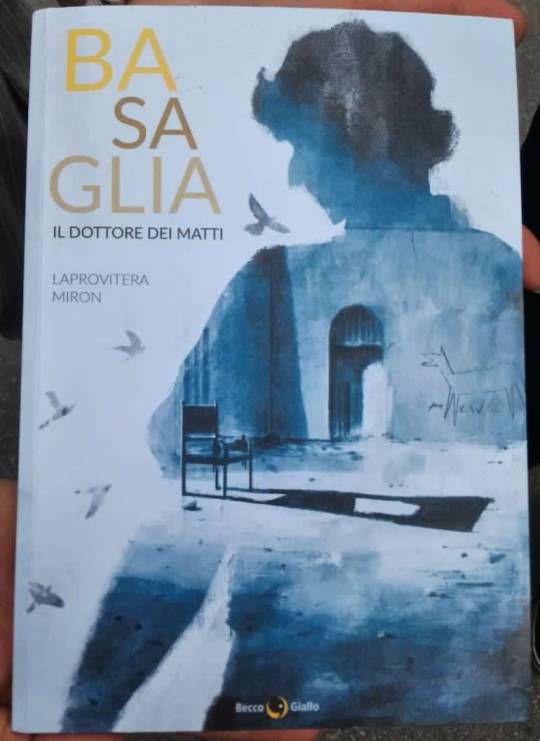
#Thank you for asking 💜✨!#This was fun#Especially when I realized that in order to avoid overthinking it to eternity I had to pick a smaller scale#:P#Ps. Franca Ongaro Basaglia definitely deserve more honor and glory too tbh#Ask#greypetrel
6 notes
·
View notes
Photo
Artemisia Gentileschi
Italian painter

Self-portrait as the Allegory of Painting (La Pittura) - Artemisia Gentileschi
Artemisia Lomi or Artemisia Gentileschi was an Italian Baroque painter. Gentileschi is considered among the most accomplished seventeenth-century artists, initially working in the style of Caravaggio. She was producing professional work by the age of 15.
Born: July 8, 1593, Rome, Italy
Died: 1653, Naples, Italy
Spouse: Pierantonio Stiattesi (m. 1612–1623)
Siblings: Francesco Gentileschi
Parents: Orazio Gentileschi, Prudentia Monotone Gentileschi
Period: Baroque
Nationality: Italian


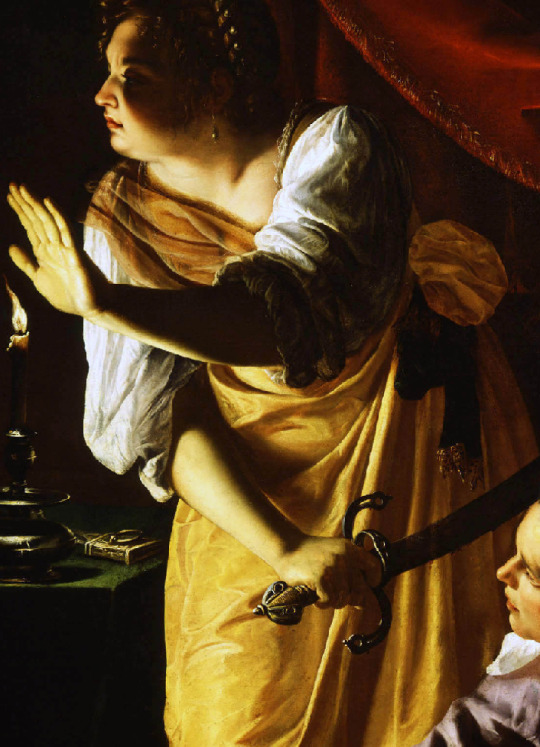

Artemisia Gentileschi (1593-c.1656) & Yellow
Lot and his Daughters, Esther before Ahasuerus, Judith and her Maidservant, Penitent Mary Magdalene.
2K notes
·
View notes
Text

Artists included: Ángel Zárraga, Marten de Vos, Artus Wolfaerts, Jacopo Zanguidi, Jacob de Backer, Gerrit van Honthorst, Francesco Guarino da Solofra, Francesco Guarino, The Master of the Parrot, Antwerp School, Manuel Lopez Vazquez, Anton Kern, Pere Lembrí, Valencian School, Caravaggio, Anton Raphael Mengs, School of Toledo, Spanish School, Pedro Orrente, Francisco Camilo, Bolognese School, Northern follower of Leonardo da Vinci, Ferrarese School, Jacopo Bassano, Marco Palmezzano, Marco Palmezzano, Orazio Lomi Gentileschi, Giovanni Battista Piazzetta, Jacques Stella, Artemisia Gentileschi, Daniele Crespi, Onorio Marinari, Gregorio Lazzarini, Francesco de Mura, Francisco Camilo, Sir Peter Paul Rubens, Theodoor Rombouts, Jacques d'Arthois…
Please follow link for full post
Francesco Guarino da Solofra,Artus Wolfaerts,Jacob de Backer,Gerrit van Honthorst,Jacopo Zanguidi,Marten de Vos,RELIGIOUSART, Zaidan, Mythology, Religion, biography, Paintings, Art, History, Ancient, footnotes,
66 Paintings - RELIGIOUS ART BY THE OLD MASTER PAINTERS - Paintings from the Bible, with footnotes
#Icon#Bible#biography#History#Jesus#mythology#Paintings#religionart#Saints#Zaidan#footnote#fineart#Calvary#Christ
1 note
·
View note
Text

Artist Artemisia Gentileschi
Judith and Maidservant with Head of Holofernes (between circa 1623 & 1625)
oil on canvas
184 cm x 141.6 cm (72.4 in x 55.7 in)
https://palianshow.wordpress.com/2022/04/18/artemisia-gentileschi-italy-1593-1656/
In an era when women had few opportunities to pursue artistic training or work as professional artists, Gentileschi was the first woman to become a member of the Accademia di Arte del Disegno in Florence and she had an international clientele.
Many of Gentileschi's paintings feature women from myths, allegories, and the Bible, including victims, suicides, and warriors.
Some of her best known subjects are Susanna and the Elders (particularly the 1610 version in Pommersfelden), Judith Slaying Holofernes (her 1614–1620 version is in the Uffizi gallery), and Judith and Her Maidservant (her version of 1625 is in the Detroit Institute of Arts).
Artemisia Lomi or Artemisia Gentileschi (US: /ˌdʒɛntiˈlɛski/, Italian: [arteˈmiːzja dʒentiˈleski]; 8 July 1593 – c. 1656) was an Italian Baroque painter. Gentileschi is considered among the most accomplished seventeenth-century artists, initially working in the style of Caravaggio. She was producing professional work by the age of fifteen.
about the artwork: Judith and her servant pause, seeming to hear a noise outside Holofernes’ tent. The shadowy interior is theatrically illuminated by a single candle. Judith’s hand shields her face from the glow, drawing attention to Holofernes’ discarded iron gauntlet. The viewer’s eye travels to the object in the maidservant’s hands: Holofernes’ severed head.
source: Wikipedia
#ArtemisiaLomi #ArtemisiaGentileschi #artherstory #womensart #greatfemaleartists #PalianShow
1 note
·
View note
Text
“I have the spirit of Caesar, in the soul of a woman”
- Artemisia Gentileschi
49 notes
·
View notes
Text

Judith Slaying Holofernes by Artemisia Lomi Gentileschi, c. 1612-13 in Florence, Italy
Note: Early critics interpreted the painting as a form of visual revenge following Gentileschi's rape by Agostino Tassi in 1611.
22 notes
·
View notes
Text
TMNT Genderbend Names
I need help again but it’s actually, like... important??? For fic, anyway.
So I’m tagging my tmnt pals. @crow-dog-blogs @leonsi @this-world-of-beautiful-monsters @brightlotusmoon @neromia
This’ll be... not long-long but lots of lines so I’ll put under a cut. I need help with names. Please. O~O
So I’m doing a genderbend oneshot, but I wanna use the same names for the characters throughout my genderbend stuff--which will include my Comparisons AU whenever I get around to revamping that thing. I have some ideas, but I want second opinions, especially ‘cause like, half of you guys read my stuff now and... I just would really like your input, please.
So, I’ll start with the main cast in this post, or at least the ones I’m worried about Right Now, and then tomorrow I’ll reblog with minor characters/villains that won’t be of much importance (at least for a while). I’ll color-coding and role-related nicknames, or actually titles for canon characters.
So for our Fearless Blue One, I think I’ll definitely hope on the Lavinia bandwagon. I mean, the woman was a fucking overachiever in the best way--she was the first female artist to rely solely on her commission money and she was known throughout western Europe, not just in Italy. Also, she was the first woman artist to paint/draw female nudes??? And she had a househusband with children? Renaissance Icon much? Plus, there’s the added benefit of Simple Nicknames and keeping the initials; Fearless Leader Lavinia, Nia, Vin, Vinny--lots of choices!
Next the Feisty Ball of Flames, our darling Red Turtle. I was thinking Sofonisba, who is also an icon and not-coincidentally my favorite artist of all time. She was taught by Bernardino Campi, which was kind of a big deal at the time, and was internationally recognized as a fucking fantastic artist. She worked in the Spanish Royal Court--she was an Italian woman and worked for the Spanish royals. Her paintings are stunning and remarkably realistic for the time period--she was so good that Michelangelo gave her props. That kind of badassery is befitting our sewer-dwelling brawler. However, nicknames were a bit tricky for me. I decided that Sof (pronounced like the beginning of Sophie) would probably be her regular nickname and Sofie would be her Special Cute Nickname.
For the turtley genius, I’m thinking Giovanna. Giovanna Garzoni was a still-life painter and portraitist. Her work is very good and her paintings are remarkably realistic. She was considered so good at what she did, that she could, reportedly, ask any price for her paintings. For some time, her primary clients were the Medici Family. She also attended the Accademia di San Luca, where she followed events and discussion aimed at educating, socializing, and professionalizing painters, architects and sculptors of Rome. Nicknames are pretty easy, too: Vanna, Van, Gio (pronounced Vawn-ah, Vawn, and Jo(e), respectively). Vanna and Van sound a bit like Donnie and Don, too, so that’s cute.
Last turtle-sib: Artemisia. Artemisia Lomi, or Artemisia Gentileschi, among the most accomplished seventeenth-century artists, initially working in the style of Caravaggio. She was producing professional work by the age of fifteen, and was the first woman to become a member of the Accademia di Arte del Disegno in Florence. She had an international clientele. She did a lot of darker works with bright lighting and vivid colors, which reminds a lot of the Prankster--bright and cheery at first glance but a little darker in reality. Also, the nicknames Art and Arty follow a similar vein of Mike and Mikey.
For Splinter’s eldest child, I was thinking Mitsuaki, which is a Japanese name meaning “light, luminence.” It keeps the M initial of Miwa and keeps the fluffy meaning (Miwa means something like “beautiful” or “peaceful”--it might’ve been “beautiful peace,” I don’t remember off the top of my head). Of course, the Shredder will rename this child, which I don’t think Shred-head is very good at naming babies (he named Karai “spicy,” after all), so I think he’d probably go with something like Kohaku, which translates roughly to “amber”--the color of the kid’s eyes. Pretty obvious, but I thought it would be funny, and I like shitting on Shredder. Have a little gag about Shredder being so uncreative that they would immediately name their only kid after their eye color...
Speaking of, I’m keeping the name Saki, since it’s unisex; so is Yoshi, so I’m keeping that, too. Titles are still Shredder and Splinter.
August is the redhead, of course, and Casey is unisex so it stays.
I’m not worried about anybody else’s names right now, since they’re not relevent to what I’m working on. But, yeah, please give me the feedback. I’m having a bit of a dilemma and I usually spend, like, weeks on names, so...
28 notes
·
View notes
Note
Eleven, what's your favorite historical figure that you've met?
Hmm.. I've met many people over the years, but the one I remember most fondly of all would be Artemisia Lomi Gentileschi. A lovely and strong woman, truly. I admire her to this day.
- Eleven
2 notes
·
View notes
Text


Will I ever be over 'Judith and her maid' by Artemisia Lomi Gentileschi? Unlikely.
2 notes
·
View notes
Text
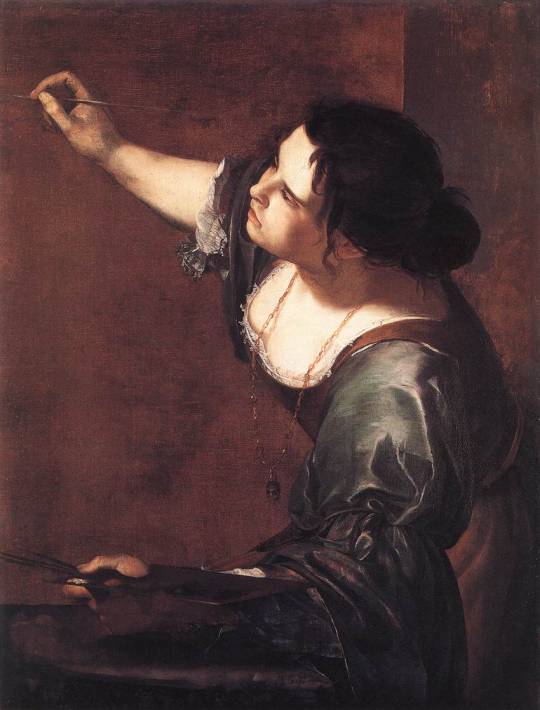
By: Amy Fredrickson
Artemisia Gentileschi was born on July 8, 1593, in Rome and is one of the most distinguished artists of her generation. She challenged the societal limitations placed on female artists during her time and became a successful history painter in her own right. Her career took her from Rome to Florence, Venice, London, and Naples, where she worked for elite patrons such as the Medici family in Florence and King Philip IV of Spain.
Artemisia was the eldest of Prudenzia Montoni and Orazio Lomi Gentileschi’s (1563–1639) five children as well as their only daughter. She was born into an artistic family. In addition to her father, her grandfather Baccio Lomi (c.1550–1595) and her uncle Aurelio Lomi (1556 – 1622) were well-known Pisan painters.
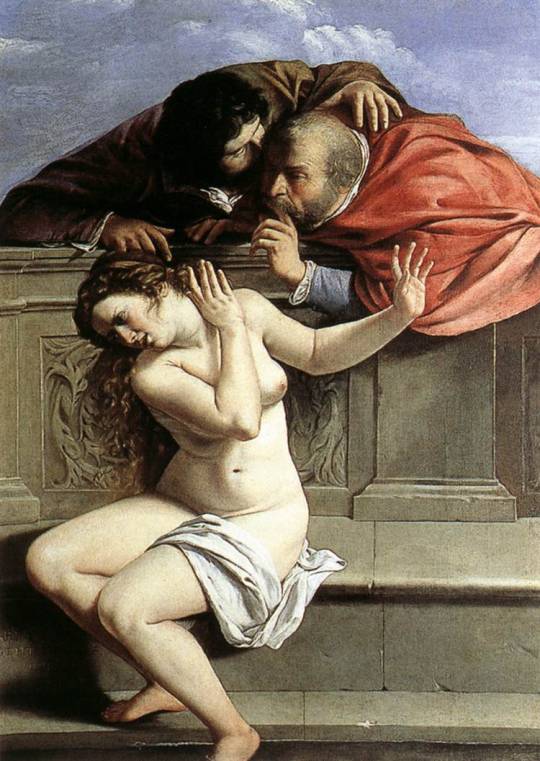
Originally a mannerist-style painter, Orazio became a follower of Caravaggio’s practice of working from nature, and he trained Artemisia to paint in this manner. As a child, Artemisia worked in his studio, mixing pigments and making varnishes. She learned the techniques of chiaroscuro, which was characteristic of Caravaggist paintings. In turn, Artemisia was a second-generation champion of Caravaggio’s realism; her first recorded paintings are almost indistinguishable from her father’s, such as Susanna and the Elders (1610). Painted a few years later, Judith and Her Maidservant (c.1614-20) in the Palazzo Pitti sets her apart from Orazio for its emotive protagonists and deep tenebrism.
Orazio hired painter Agostino Tassi (1578 – 1644) to tutor Artemisia. In the spring of 1611, Tassi raped her, and he refused to fulfill his promise to marry her. Orazio took him to trial because the crime against his daughter was a crime against his family’s honor. Artemisia’s infamous 1612 trial was well-documented and lasted seven months. She was forced to provide a testimony under torture. Found guilty, Tassi was sentenced to banishment from Rome for five months; however, his punishment was not enforced.
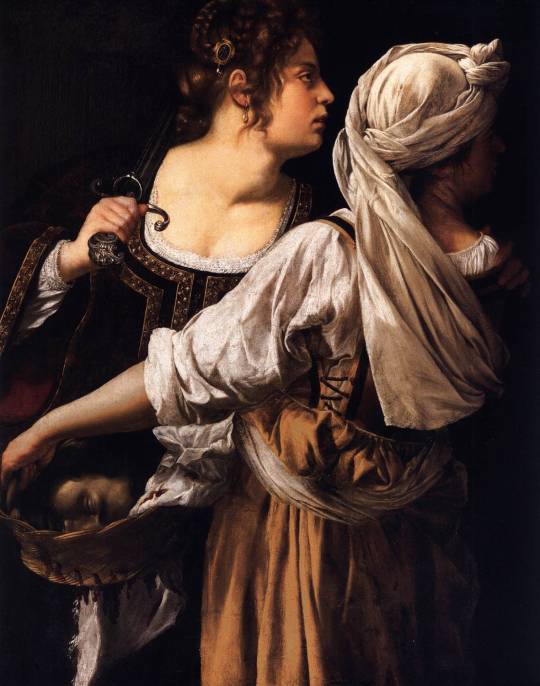
Shortly after, Artemisia married Florentine artist Pietro Antonio di Vincenzo Stiattes (b.1584), and they moved to Florence. Before their arrival, Orazio wrote to the dowager Grand Duchess of Tuscany, Christina of Lorraine, requesting her help in preventing Agostino Tassi's release from the Corte Savella where he was being jailed. In return, Orazio offered to send her one of Artemisia's paintings, Judith and Her Maidservant (c.1614-20).
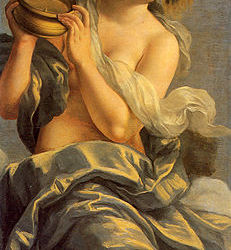
Artemisia established herself as an independent artist in Florence, and she began developing her distinct style. She pushed against the societal norms established for women during her time, such as relegating women painters to the genre of still life or portraiture. Instead, she concentrated on history painting. She established herself within Florentine literary circles, which led to commissions from the Medici family and Michelangelo Buonarotti the Younger. She painted Judith and Holofernes (c. 1612–1621) and the Penitent Mary Magdalene (1620–1625) in the Palazzo Pitti for the Medicis, and for Casa Buonarotti, she painted a ceiling painting called the Allegory of Inclination (1615–1617). Her Florentine paintings illustrate her development beyond her father’s teachings and those of Caravaggio as she introduced a more polished surface, brighter colors, and sophisticated iconography. Perhaps these advances were a product of her association with the poets, painters, and intellectuals she had encountered in Florence. In 1616, Artemisia became the first female member of the Accademia delle Arti del Disegno.

Artemisia was business savvy; she ran her own studio and controlled her finances. The move to Rome may have coincided with Grand Duke Cosimo II de’ Medici’s death in 1621. His successor was Ferdinando, his ten-year-old son, who was governed by his mother and grandmother, and ultimately, their tastes leaned toward penitent biblical figures rather than Artemisia’s bloodletting heroines.
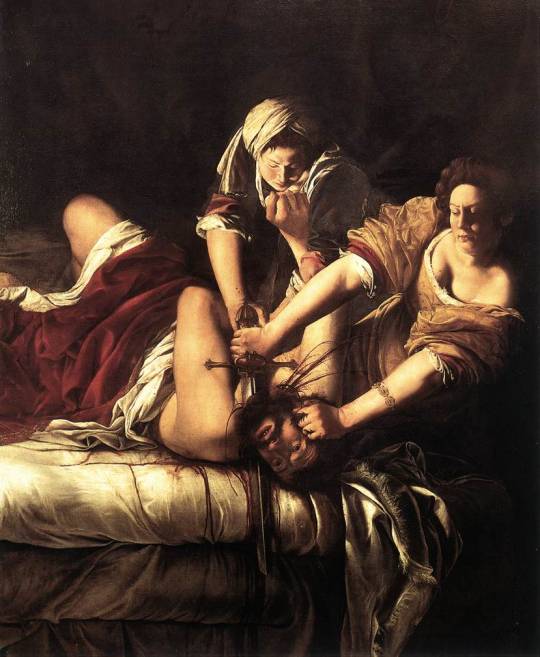
In 1620, Artemisia and her husband returned to Rome for approximately six years. Judith and her Maidservant (c. 1623-25), now in Detroit, dates to this time, although how many paintings Artemisia produced during her second Roman period is unclear. Little is known about her involvement in Roman artistic circles of this period, yet Simon Vouet’s portrait of Artemisia for the papal secretary Cassiano dal Pozzo provides some insight that she was associated with an elite circle of patrons and possibly the Academy of the Desiosi.
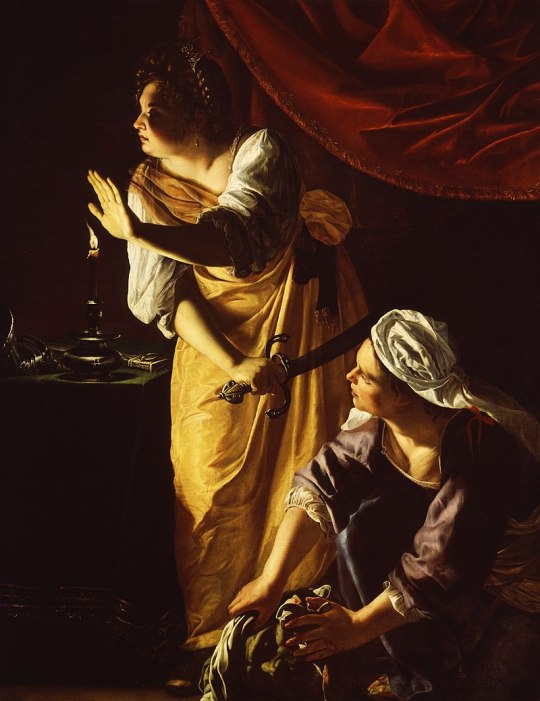
In 1627, Artemisia traveled to Venice for a few years to possibly attain commissions. During her Venetian sojourn, she participated in literary circles such as the Accademia degli Incogniti. Venetian poetry of this time alludes to her status in these circles. While in Venice, Artemisia began to specialize in monumental biblical and historic women; the subject of these paintings featured the triumphs and tragedies of these heroines.

In 1629, the Spanish viceroy, the Duke of Alcalá, invited Artemisia to Naples, and a year later, she resided in Naples and ran a successful studio. A remarkable example of this period is her Esther before Ahasuerus (1627-1630), which hints at her Venetian sojourn. The incorporated grandiose movements and ornamental dress emit an operatic air.
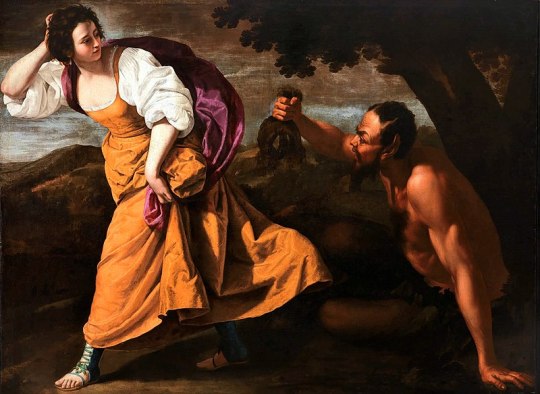
Her recently discovered paintings, such as Corsica and the Satyr (c. 1630-35) and Christ and the Samaritan Women (c. 1637), reveal that the 1630s marked a high point in her career. What sets these works apart from her earlier paintings are her lyrical subjects and the loose Venetian-inspired brushwork of broad white strokes with colors applied on top. During the 1630s, she began incorporating rich colors, such as ochres, blues, and cinnabar red. Artemisia created dimension and drama through her use of such rich hues.

Artemisia left Naples in 1638 to assist her ill father in London. Orazio worked for the English court beginning in 1626 and was working on ceiling paintings for the Great Hall in the Queen’s House in Greenwich. By 1640, she returned to Naples, where she remained until her death. It is unknown when she died, but a recently discovered document shows her living in Naples in August 1654. It is plausible that Artemisia died during the 1656 plague that had ravaged Naples and killed half of its inhabitants.
Images:
Self-Portrait as the Allegory of Painting, c.1630, oil on canvas, 96,5 x 73,7 cm., Royal Collection, Windsor
Susanna and the Elders, 1610, oil on canvas, 170 x 121 cm., Schloss Weissenstein, Pommersfelden
Judith and Her Maidservant, c.1614-20, oil on canvas, 114 x 93.5 cm., Galleria Palatina (Palazzo Pitti), Florence
Allegory of Inclination, c. 1615, oil on canvas (ceiling), 152 cm × 61 cm., Casa Buonarroti, Florence
The Penitent Mary Magdalen, 1620-25, oil on canvas, 146 x 109 cm., Galleria Palatina (Palazzo Pitti), Florence
Judith Beheading Holofernes, 1612-21, oil on canvas, 199 x 162 cm., Galleria degli Uffizi, Florence
Judith and her Maidservant, c. 1623–1625, oil on canvas, 184 x 141.6 cm., Detroit Institute of Art.
Esther Before Ahasuerus, c. 1627-1630, oil on canvas, 208.3 cm x 273.7 cm., Metropolitan Museum of Art.
Corsica and the Satyr, c.1630-35, oil on canvas, 155 x 210 cm., Private Collection.
Christ and the Samaritan Women, c. 1637, oil on canvas, 267.5 x 206 cm., Private Collection.
References:
Sheila Barker, 'Artemisia's Money: The Entrepreneurship of a Women Artist in Seventeenth-Century Florence,' Artemisia Gentileschi in a Changing Light, ed. by Sheila Barker (London, 2018), pp 59-88
Breeze Barrington, 25 April 2020, "The Trials And Triumphs Of Artemisia Gentileschi," Apollo Magazine. [online] <https://www.apollo magazine.com/artemisia-gentileschi-london/>
Ward R. Bissell, Artemisia and the Authority of Art: Critical Reading and Catalogue Raisonné (University Park, 1999)
Ward R. Bissell,‘Artemisia Gentileschi-A New Documented Chronology,’ The Art Bulletin 50, no. 2, (1968), pp. 153–168.
Patrizia Costa, ‘Artemisia Gentileschi in Venice’, Source: Notes in the History of Art 19, no. 3, (2000), pp. 28-36
Mary D. Garrard, 'Artemisia Gentileschi's 'Corisca and the Satyr,'' The Burlington Magazine 135, no. 1078 (1993), pp. 34-38
Mary D. Garrard, Artemisia Gentileschi: The Image of the Female Hero in Italian Baroque Art (Princeton, 1989)
Jesse Locker, Artemisia Gentileschi: The Language of Painting (New Haven, 2015)
#artemisia#artemisia gentileschi#florence#rome#caravaggisti#Caravaggio#Baroque Art#women artists#female artist#heroines#judith#judith and holofernes#susanna and the elders#self portrait
49 notes
·
View notes